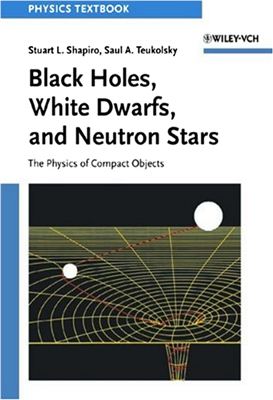Weinheim: WILEY-VCH Verlag GmbH & Co. KGaA, 2004. – 661 pages.
This textbook is the outgrowth of a course on the physics of compact objects, which we have taught at Coell University since 1975. As a class, compact stars consist of white dwarfs, neutron stars, and black holes. As the endpoint states of normal stellar evolution, they represent fundamental constituents of the physical Universe.
This book, like the course itself, is a product of the burst of scientific activity commencing in the 1960s which centered on compact objects. During this period, pulsars and binary X-ray sources were discovered in our Galaxy. These discoveries proved to be milestones in the development of the field. They fuished definitive proof of the existence of neutron stars, which had previously existed only in the minds of a few theorists. They made plausible the possibility of black holes and even pointed to a few promising candidates in the night sky. More important, perhaps, these discoveries triggered new theoretical studies and observational programs designed to explore the physical nature of compact stars. A whole generation of experimental and theoretical physicists and astronomers has been trained to participate in this exciting, ongoing investigation.
This textbook is the outgrowth of a course on the physics of compact objects, which we have taught at Coell University since 1975. As a class, compact stars consist of white dwarfs, neutron stars, and black holes. As the endpoint states of normal stellar evolution, they represent fundamental constituents of the physical Universe.
This book, like the course itself, is a product of the burst of scientific activity commencing in the 1960s which centered on compact objects. During this period, pulsars and binary X-ray sources were discovered in our Galaxy. These discoveries proved to be milestones in the development of the field. They fuished definitive proof of the existence of neutron stars, which had previously existed only in the minds of a few theorists. They made plausible the possibility of black holes and even pointed to a few promising candidates in the night sky. More important, perhaps, these discoveries triggered new theoretical studies and observational programs designed to explore the physical nature of compact stars. A whole generation of experimental and theoretical physicists and astronomers has been trained to participate in this exciting, ongoing investigation.

